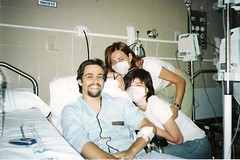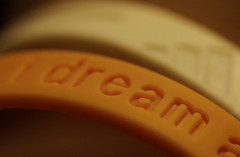Abnormal Psychology Flashcards II Flashcards
Terms : Hide Images [1]
| 488408377 | habituation | repeated exposure reduces emotional response to a stimulus -anxiety disorders (PHOBIAS) |  |
| 488408378 | exposure | repeated contact with a feared/arousing stimulus in controlled setting (leads to habituation) |  |
| 488408379 | managed care | health insurance plan may restrict # days in hospital or restrict facilities where patient can receive care |  |
| 488408380 | treating a multicultural population | bridging cultural gap between patient and clinician | |
| 488408381 | problems with treating minorities | -less likely to use MI services -less likely to have healthcare coverage -may not speak English -distrust treatment -stigma of treatments (fear) | |
| 488408382 | cultural competence | clinical treatment should be sensitive to different cultural backgrounds | |
| 488408383 | prevention programs | designed to prevent/inhibit development or progression of psychological disorders; targets those with elevated risks (family history, traumatic event, divorce, etc) | |
| 488408384 | group therapy | several patients with similar needs meet together to discuss issues with therapists; offers emotional support, uses psychodynamic/CB orientation | |
| 488408385 | systems therapy | designed to change the communication/behavior patterns of one or more family members in context of family as a whole GOALS: identify/change maladaptive patterns of interaction and communication among family members |  |
| 488408386 | paradoxical intention | therapist allows problem behavior to continue and increase in intensity or frequency (ex: if a child is acting out to bring quarreling parents together...) |  |
| 488408387 | cybertherapy | internet-based therapy that may involve email exchanges, skyping etc | |
| 488408388 | dialectical behavior therapy (DBT) | designed to treat BPD; builds skills to manage emotions, and focuses on validating patient's experience. "Dialectics" component = allows opposing beliefs and feelings to co-exist |  |
| 488408389 | psychoeducation | educating patients about research findings/therapy procedures relevant to situations | |
| 488408390 | cognitive restructuring | developed by Aaron Beck; psychological problems result from faulty automatic thoughts (cognitive theory for depression) |  |
| 488408391 | foundations of treatment | -reduce or eliminate psychological disorders -reduce or eliminate target symptoms -improve quality of life | |
| 488408392 | target symptoms | symptoms addressed by a given treatment | |
| 488408393 | biomedical treatments | aim to change brain functioning, hormonal activity, or other aspects of bodily functioning |  |
| 488408394 | agonists | mimic the effects of a neurotransmitter/neuromodulator to activate a receptor | |
| 488408395 | antagonists | bind to a receptor site and prevent neurotransmitter in synapse from binding to that receptor | |
| 488408396 | reuptake inhibitors | partially block the process by which neurotransmitters are reabsorbed into terminal button | |
| 488408397 | SSRI | selective serotonin reuptake inhibitor -Prozac, Zoloft |  |
| 488408398 | SNRI | serotonin and norepinephrine reuptake inhibitor -effexor, cymbalta |  |
| 488408399 | antipsychotics | reduce certain psychotic symptoms; known as "major tranquilizers," used to treat schizophrenia -prevent dopamine binding in synapse |  |
| 488408400 | treatments for depression | -SSRIs -SNRIs -Tricyclic antidepressants (TCA) -MAOIs (need to be on tyramine-controlled diet) | |
| 488408401 | short-term anxiety treatments | benzodiazepines (minor tranquilizers) -help to reduce anxiety quickly (Valium, Xanax) | |
| 488408402 | electroconvulsive therapy (ECT) | used to treat severe depression when all other types of therapy fail -controlled brain seizure, short term memory loss | |
| 488408403 | transcranial magnetic stimulation (TMS) | sequences of short, strong magnetic pulses into cerebral cortex via coil -treatment resistant depression, no more advantageous than ECT but less side effects -elderly with depression see improvements with this technique | |
| 488408404 | biofeedback | subject brings involuntary/unconscious bodily activities under voluntary control (MOOD RINGS) -slowed heart rate, control of breathing, etc |  |
| 488408405 | psychodynamic therapy | all behavior has underlying psychological causes; unconscious driven by urges for sex and aggression, behaviors represent responses to urges |  |
| 488408406 | goals of psychoanalysis | -understand events in personal past -understand how those events and unconscious conflict and influence current difficulties -"Insight" is main catalyst of change | |
| 488408407 | therapeutic alliance | positive relationship between therapist and patient |  |
| 488408408 | dream analysis | therapist interprets content of patient's dreams: manifest content- content of dream latent content- hidden, true meaning expressed by unconscious |  |
| 488408409 | resistance | patients are likely (overtly/covertly, consciously/unconsciously) to hinder treatment | |
| 488408410 | transference | patients interact with therapist in manner that they did with parents/important figures; developed by Freud, encouraged by therapist to explore patient feelings | |
| 488408411 | client-centered therapy | humanistic therapy (Carl Rogers), intended to promote personal growth so that client can reach full potential; arises from incongruence between "real self" and "ideal self" |  |
| 488408412 | unconditional positive regard | therapist expresses positive feelings for client, regardless of expressed thoughts, emotions, or behaviors | |
| 488408413 | behavior therapy | maladaptive behaviors stem from previous learning goal: replace problematic behaviors with classical/operant conditioning models | |
| 488408414 | cognitive therapy | correct irrational thoughts and incorrect beliefs, lead to better mood/adaptive behavior | |
| 488408415 | systematic desensitization | learning to relax in presence of feared stimulus |  |
| 488408416 | exposure with response prevention | used to treat compulsive behaviors; patient is prevented from engaging in usual maladaptive response after being exposed to stimulus | |
| 488408417 | stimulus control | changing frequency of maladaptive conditioned response by controlling the frequency/intensity of exposure | |
| 488408418 | behavior modification | use of operant conditioning principles to change maladaptive behaviors goals: perform desired behavior more often and undesired behavior less often |  |
| 488408419 | shaping | creating behavioral change by reinforcing bits at a time (successive approximations) |  |
| 488408420 | rational-emotive behavior therapy | (Albert Ellis) irrational thoughts are transformed into rational ones, leading to better mood and adaptive behaviors PROMOTES self-acceptance REDUCES self-blame |  |
| 488408421 | scientific method | process of gathering and interpreting facts that can lead to formation of a new theory or validation of existing theory |  |
| 488408422 | scientific method steps | 1. Collect initial observations 2. Identify question to be answered 3. Develop hypothesis 4. Collect data to test hypothesis 5. Formulate theory 6. Test theory | |
| 488408423 | characteristics of the scientific method | data- methodological observations of phenomena replication- study must have similar characteristics of original hypothesis- preliminary idea to explain data set theory- principle that explains data set predictions- hypothesis should be confirmed if theory is correct experiment- manipulate one variable at a time and measure consequences | |
| 488408424 | confounds | factors that might affect variables of interest and covary with dependent (age, health, education, SES) | |
| 488408425 | sampling bias | distortion when experiment participants haven't been drawn randomly from population; limiting factor when want to generalize results to population you're treating | |
| 488408426 | correlational research | used when manipulating IV is impossible/unethical; cannot conclude causality | |
| 488408427 | correlation coefficient | -1 to 1, magnitude of relationship = "index of overlap" | |
| 488408428 | statistically significant | probability of obtaining the value of a statistical test is greater than would be expected by chance alone | |
| 488408429 | epidemiology | correlational research method that investigates rate of disease/disorder occurrence and causes/risk factors |  |
| 488408430 | case studies in psychopathology | one individual and factors that underlie disorder(s); in-depth understanding that allows individual/researcher to stay connected BUT cannot be generalized |  |
| 488408431 | single-participant experiment | experiments with a single participant; rely in ABAB design: A- baseline condition B- treatment/behavior modification goal: to change target behavior as result of treatment |  |
| 488408432 | meta-analysis | statistical procedure to generalize across studies that measure the same thing; may uncover relationship that isn't apparent in one study CON: "file drawer problem," some studies never make it to publication | |
| 488408433 | response bias | tendency to respond in a particular way, regardless of what is being asked |  |
| 488408434 | social desirability | answering questions in a way that makes subjects "look good," want to appear desirable |  |
| 488408435 | experimenter bias (expectancy effect) | treating participants in ways that encourage particular types of responses SOLUTION: double blind procedure | |
| 488408436 | reactivity | behavior change that occurs when one becomes aware of being observed |  |
| 488408437 | placebo effect | treatment that targets neurological factors, is one treatment more effective than no treatment? Inert substance or procedure | |
| 488408438 | common factors of therapy | -helpful aspects, opportunities to express problems -explanation/understanding of problems is offered -can gain support and feedback -hope and positive relationship | |
| 488408439 | specific factors of therapy | characteristics of a particular treatment/technique that lead it to have unique benefits | |
| 488408440 | analogue study | treatment is provided in a way that is analogous to the way it is usually provided, but under controlled lab conditions (minimize confounds) |  |
| 488408441 | treatment that targets psychological factors | is therapy better than no treatment? YES Assign participants to treatment vs. no treatment (wait-list control) | |
| 488408442 | baseline assessment | -levels of symptoms at beginning of study; assess same variables after treatment period | |
| 488408443 | randomized clinical trial (RCT) | -treatment and control group -random assignment to either group PROS: well-designed and well-conducted, evidence-based CONS: patients in study are usually white/middle-class -overly rigid manual-based treatment, length of treatment -question of external validity: can results be generalized? -problem with DSM diagnostic group heterogeneity |  |
| 488408444 | manual-based treatment | requires therapists to base treatments on detailed manuals |  |
| 488408445 | allegiance effect | studies conducted by investigators who prefer a particular theoretical orientation tend to obtain data that supports this orientation |  |
